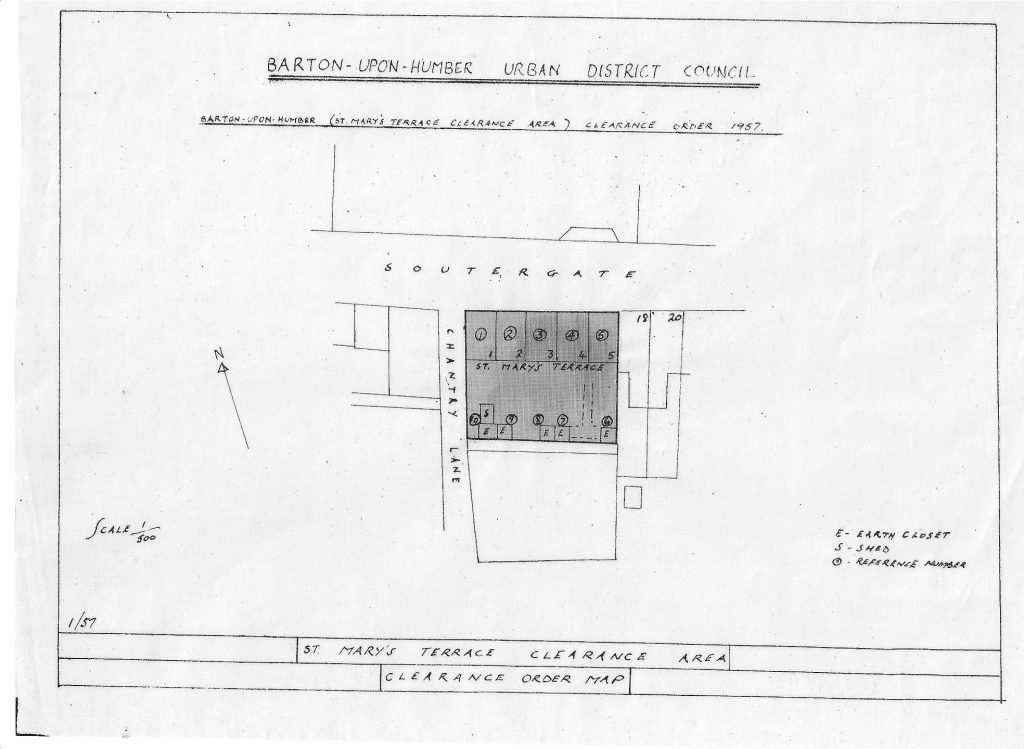
Apologies for the recent poor level of service but I have had, and still do have, a very bad cold, not Covid.
Continuing the above theme today’s illustration is a plan copied from some old documents which were saved from destruction by John French when Lindsey County Council gave way to Humberside in 1973. It shows a plot of land in Barton on Humber where five cottages were demolished in 1957 to be replaced by a pair of council semis funded by the then council with a subsidy from the Exchequer, as was common at the time. Whether the five cottages were built before or after Barton Town Council issued building bylaws, probably late 19th century, is not known, but I suspect before. This case study and four others formed the substance of by article on page three of this website ‘A Twentieth Century source of evidence on 19th Century housing styles and provision. Case study of Barton on Humber’.
Before looking into the details I want to take the opportunity to mention generally something of the history of housing demolition. There was nothing new about housing demolition and it was by no means confined to the post-War era, in fact the other examples in my article are fom the 1920s and 1930s. What makes one think that demolition was post-War only was its scale. For example, in Hull the very dense housing streets immediately north of St. Andrew’s Dock and the hundreds (maybe) of terraces off those streets were demolished wholesale in the 1960s and’70s with families then peopling Orchard Park Estate and the satelite town of Bransholme. The houses demolished were only 80 to 90 years of age having been mostly built in the 1880s and, in compliance with the early Housing By-laws of Hull’s Municipal Authority.
In modern times most buildings have been built with a finite life in mind (witness Hull’s 21st century secondary schools with a life expectancy of 30 years!).
(to be continued)